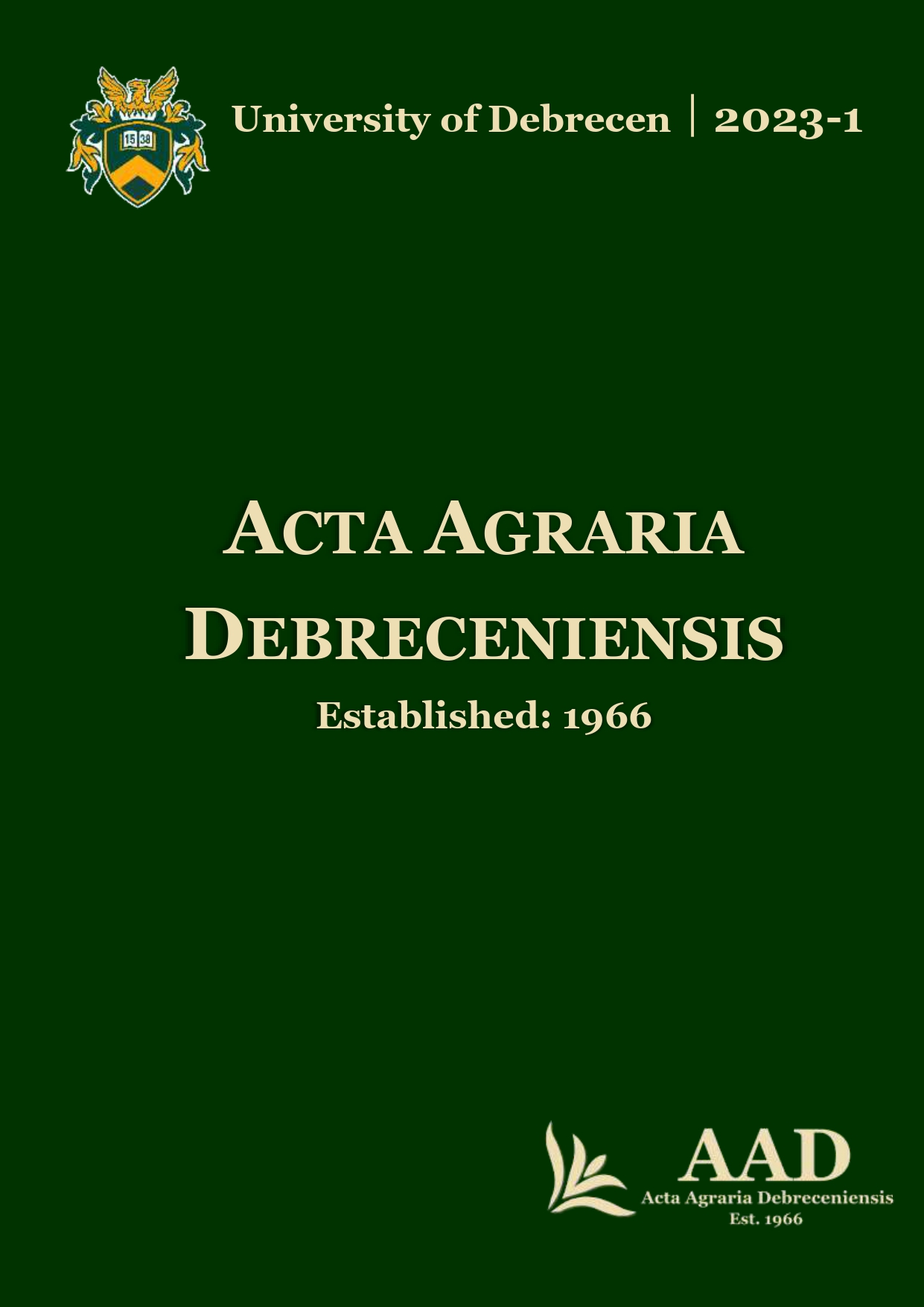Effects of diets with different fibre content on the performance of rabbit does and on parasitological infection
Authors
View
Keywords
License
Copyright (c) 2023 by the Author(s)

This work is licensed under a Creative Commons Attribution 4.0 International License.
How To Cite
Accepted 2023-04-26
Published 2023-06-05
Abstract
The effect of two diets with different fibre contents was examined on rabbit does’ performance and parasitological infection. Diet P2 had 1% higher crude fibre, ADF and starch contents than that of diet P1. The performance of 12–12 does and litters per group were examined during two consecutive inseminations. In both dietary groups, according to a 49-day reproduction rhythm, the does were artificially inseminated 18 days after kindling. Most production traits were not affected by the diets (kindling rate, weight of does and their kits, feed intake, mortality; P>0.05). Significant differences were only found in litter sizes as the number of kits was lower in P1 diet fed group at all examined days of lactation. The significant “Diet x Reproduction cycle” interaction showed that the litter sizes of dietary groups did not differ at the first examined insemination, however at the subsequent reproduction cycle 6–8% lower litter sizes were counted in P1 fed does compared to group P2 (litter size at 4 day: 9.00 vs 9.58–9.92, P = 0.004; litter size at 11 day: 8.83 vs 9.58–9.92, P = 0.037 for diet P1 at the 2nd reproductive cycle compared to all the other cases, respectively). The two diets with different compositions did not affect most of the production results of the rabbit does and their kits, but the lower litter size of does consuming P1 diet at the second examined lactation suggests the adverse effect of P1 diet’s long-term use. From the collected manure samples not any parasites were detected which presents a very favourable picture of farm from the point of view of hygiene and animal health.
References
- Álvarez, J.L.–Margüenda, I.–García-Rebollar, P.–Carabaño, R.–De Blas, C.–Corujo, A.–García-Ruiz, A.I. (2007): Effects of type and level of fibre on digestive physiology and performance in reproducing and growing rabbits. World Rabbit Sci., 15. 9–17. https://doi.org/10.4995/wrs.2007.610
- Barreto, G.–De Blas, C. (1993): Effect of dietary fibre and fat content on the reproductive performance of rabbit does bred at two remating times during two seasons. World Rabbit Sci. 1(2), 77–81. DOI: https://doi.org/10.4995/wrs.1993.198
- Cervera, C.–Fernández, J.–Viudes, P.–Blas, E. (1993): Effect of remating interval and diet on performance of female rabbits and their litters. Anim. Prod. 56(3), 399–405. DOI: https://doi.org/10.1017/S0003356100006450
- De Blas, C.–Taboada, E.–Mateos, G.G.–Nicodemus, N.–Méndez, J. (1995): Effect of substitution of starch for fiber and fat in isoenergetic diets on nutrient digestibility and reproductive performance of rabbits. J. of Anim. Sci. 73(4), 1131–1137. https://doi.org/10.2527/1995.7341131x
- Delgado, R.–Abad-Guamán, R.–Nicodemus, N.–Villamide, M.J.–Ruiz, N.–Carabaño, R.–Menoyo, D.–García J. (2018): Effect of level of soluble fiber and n-6/n-3 fatty acid ratio on performance of rabbit does and their litters. J. of Anim. Sci., 96: 1084–1100. https://doi.org/10.1093/jas/sky019
- Demeter, Cs.–Demeter-Jeremiás, A.–Német, Z.–Sándor, F.–Matics, Zs. (2021): Eimeria fertőzöttségi körkép nagyüzemi nyúltelepeken végzett parazitológiai vizsgálatok eredményei alapján. Proceedings of the 32nd Hungarian Conference on Rabbit Production, Kaposvár, Hungary, 30 Sept 2021, 55–60.
- Juráskó, R. (2022): A Magyar nyúlágazat helyzete 2021. Procceedings of the 33rd Hungarian Conference on Rabbit Production, Kaposvár, Hungary, 29 Sept 2022, 7–11.
- Méndez, J.–De Blas, C.–Fraga, M.J. (1986): The effects of diet and remating interval after parturition on the reproductive performance of the commercial doe rabbit. J. of Anim. Sci. 62(6), 1624–1634. https://doi.org/10.2527/jas1986.6261624x,
- Saliu, E.–Krieg R.–Martínez-Vallespín, B.–Simon, A.–Zentek, J. (2022): Performance, health, bacterial metabolites and intestinal histomorphology in does and growing rabbits fed diets with increasing lignocellulose-to cellulose proportions. Archives of Animal Nutrition, 76:2, 125–144. https://doi.org/10.1080/1745039X.2022.2074204,
- Vetési, F. (1990): Házinyúl egészségtan. Mezőgazdasági Kiadó: Budapest, Hungary, pp. 208–215.
- URL1: https://www.rvc.ac.uk/review/parasitology/EggCount/Purpose.htm

 https://doi.org/10.34101/actaagrar/1/12415
https://doi.org/10.34101/actaagrar/1/12415